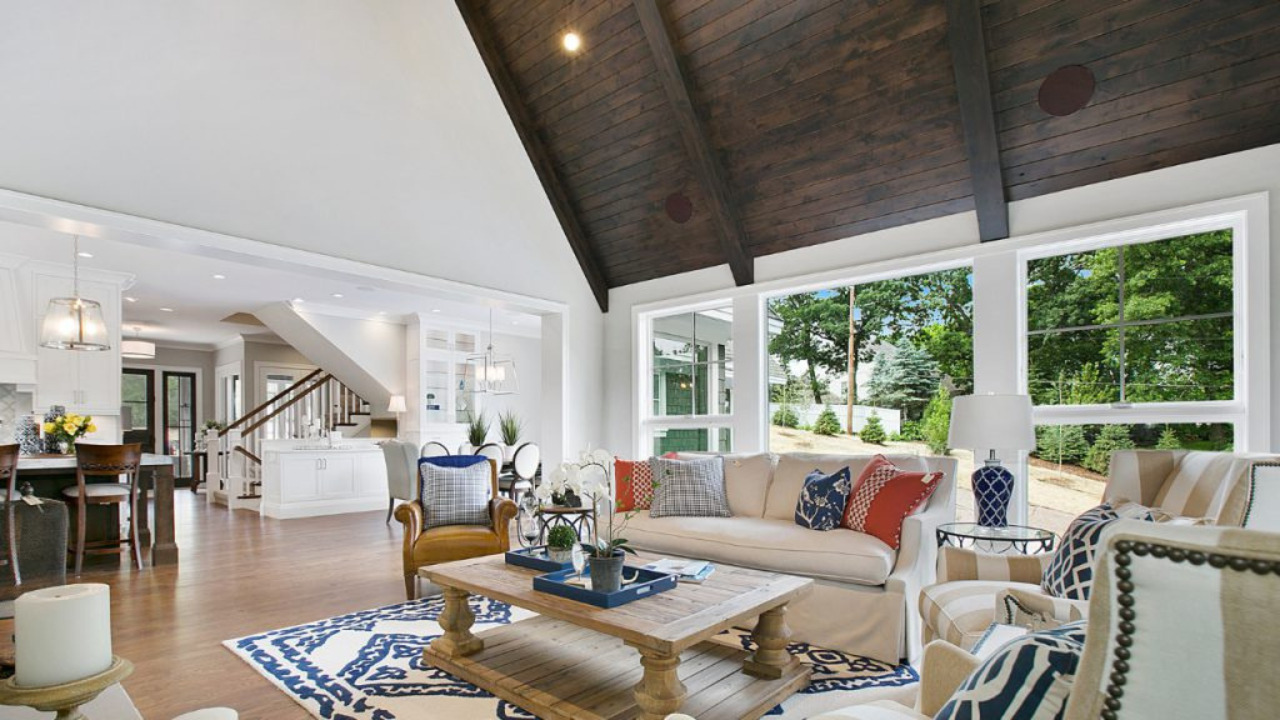Have a home built around the late 20th century? Then you have most likely encountered popcorn ceilings. Nowadays, you won’t find such ceilings due to certain restrictions imposed by the government. However, back in the day, it was an easy task to add a popcorn ceiling and quite common too. They were easy to distinguish due to their textured material giving it a bumpy look. Hence the name “popcorn” came into existence.
Once popular, their days were pretty numbered after the new era in architecture began. But what exactly happened? Were there any benefits of popcorn ceilings? What was the purpose of the popcorn ceiling that is now obsolete? Let’s find out the answer to our questions about why homeowners had popcorn ceilings in their homes.
Table of Contents
What are Popcorn Ceilings
In Canada, popcorn ceilings—also referred to as stucco ceilings, acoustic ceilings, or cottage cheese ceilings—were incredibly common in homes constructed between the 1930s and 1990s. These ceilings, which were often seen in basements, bedrooms, and entry corridors of homes, were distinguished by their textured appearance and feel caused by employing a specific mix and a sponge for stippling.
What is the Point of Popcorn Ceilings
The purpose of popcorn ceilings was many hence why they remained popular for quite a time. Some of the common purposes popcorn ceilings serve are as follows:
1. Concealing Imperfections
Hiding imperfections is one of the major reasons people prefer popcorn ceilings. They can conceal everything from small holes to cracks and dents. It may cover up those old, poorly done repairs entirely, and no one would ever know because the three-dimensional texture is rough and creates shadows.
Smooth ceilings give off a more polished, contemporary appearance, but they also make it more difficult to hide seams, cobwebs, and drywall touch-ups since indoor or outdoor lighting reflects uniformly on flat surfaces.
2. Sound Absorption
Popcorn ceilings are also known as the acoustic ceiling. The bumpy appearance of the popcorn ceiling increased the surface area which could easily muffle the sound and reduce echoes. This enables popcorn ceilings to serve the purpose of making your spaces soundproof.
Definitely helpful for times when you feel like having a midnight snack or for flooring with lots of traction! In regions where noise levels are likely to be higher, popcorn ceilings can be a clever method to strategically reduce noise levels. There are alternative methods available if you want to soundproof your house but don’t want to cover your ceiling with popcorn.
3. Cost-Effective
Whenever choosing a ceiling type, budget is one of the driving factors. If you are looking for a budget-friendly ceiling option, then popcorn ceilings serve the right purpose. The popcorn ceilings are affordable as compared to other ceiling options which is one reason behind its popularity.
What are the Benefits of Popcorn Ceilings
Other than mainstream purposes, there are many other reasons behind the popularity of popcorn ceilings.
1. Easy Installation
One of the main benefits of popcorn ceilings is easy installation. This is a one-step process and easier to install than other ceiling types. Popcorn ceiling is less labor-intensive and takes less time for application.
2. Painting Alternative
Painting is a common practice when it comes to removing ceiling imperfections, but this is not the case with popcorn ceilings. Popcorn ceilings are a cheaper alternative to painted ceiling types. In fact, the bumpy texture conceals the imperfections more efficiently.
3. Commercial Use
Popcorn ceilings are now more commonly used in commercial buildings than the residential spaces. All thanks to their sound-dampening effect that makes it a popular choice for commercial buildings. From office buildings and shopping malls to hotel lobbies and other entertainment venues, popcorn ceilings are quite in the trend surprisingly.
4. Easier Maintenance
Another benefit of using popcorn ceilings is that they are easy to maintain and repair. So, in case of any damage you can simply coat the textured paint rather than removing it whole. Also, specific tools are available for the cleaning of popcorn ceiling which results in easy maintenance.
Why was Popcorn Ceilings Popular?
The popcorn ceiling first appeared in the 1930s and became quite popular within a few years. Why were popcorn ceilings so popular? Well, the reason behind the increasing demand for popcorn ceilings was its easy availability and affordability. Painting was considered to be a task for someone with a bigger budget.
On the other hand, to give a popcorn effect, this goal was achieved by spraying a mixture resembling cottage cheese. Homeowners didn’t feel the need to repaint the ceilings like they usually did.
Any smaller patches or cracks were covered with the texture material which is why the maintenance at the time was so affordable.
Originally, popcorn ceilings were made up of asbestos. Research concluded that asbestos revealed the harmful side effects of asbestos material on human health.
Scientists linked asbestos exposure with an increased risk of mesothelioma cancer and called it a sleeping monster. In 1989, the US government banned the use of asbestos. If you’re buying a home having popcorn ceilings, it is recommended to opt for an asbestos inspection first.
Upgrade Your Home with New Ceilings
Popcorn ceilings are not a common choice for homeowners now. If you have an old home then you can think of removing the popcorn ceiling with a new one. Before upgrading your home you need to check whether the asbestos is found in the popcorn ceiling or not. Either way, you can have it replaced during home renovation for a more practical approach.





